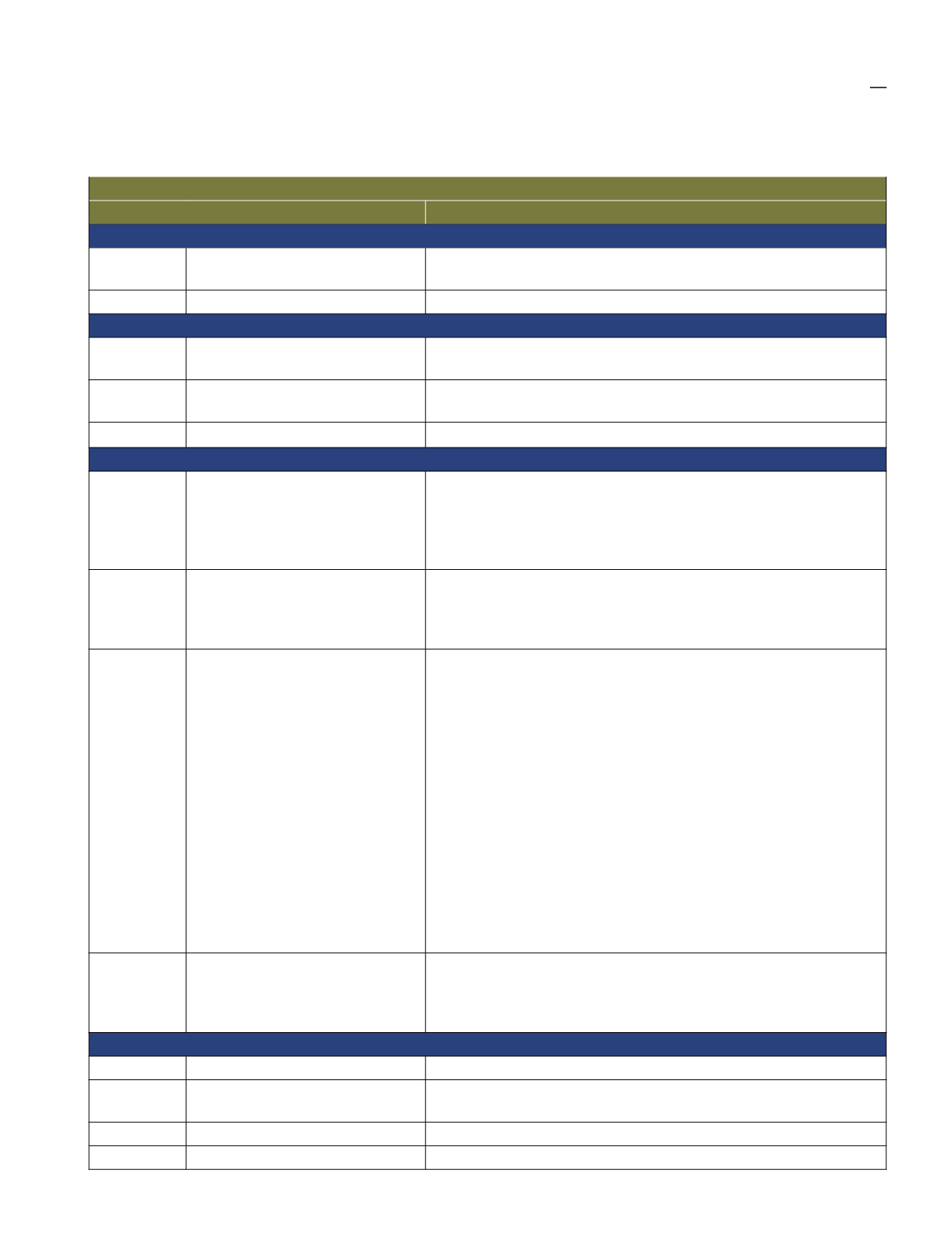

MATERIAL TOPICS - Environment
Disclosure Number
Page / Responds
302: Energy
302-1
Energy consumption within the
organization
p.44 - 46
302-4
Reduction of energy consumption p.44
303: Water and Effluent
303-1
Interactions with water as shared
recourse
p.40 - 41
303-2
Management of water
discharge-related impacts
p.38 - 39
303-5
Water consumption
p.41
304: Biodiversity
304-1
Operational sites owned, leased,
managed in, or adjacent to,
protected areas and areas of
high biodiversity value outside
protected areas
Within our oil palm estates, riparian reserves are set aside as
conservation areas wildlife corridors which include, among
others, sanctuaries for migratory birds and elephants and
habitat for jungle flora and fauna.
304-2
Significant impacts of activities,
products, and services on
biodiversity
p.36 - 37
Environmental impact assessments are carried out ahead of any
new plantation development, or as may be required by relevant
legislations.
304-3
Habitats protected or restored Except for
Plantations and Food divisions
, the Group’s
operations have limited impact on natural habitats.
Within our oil palm estates, riparian reserves are set aside as
conservation areas wildlife corridors which include, among
others, sanctuaries for migratory birds and elephants and
habitat for jungle flora and fauna.
PTNJL has also set aside areas within its plantation as water
catchment zone. Chemical applications are strictly prohibited at
the water catchment zone to facilitate natural re-vegetation of
the area and preservation thereof.
Tuna fishery in PNG is managed under the National Tuna Fishery
Management Plan, which regulates among others total allowable
catches of tuna thereby maintaining sustainable stock levels.
304-4
IUCN Red List species and
national conservation list
species with habitats in areas
affected by operations
Tuna fishery in PNG is managed under the National Tuna Fishery
Management Plan, which regulates among others total allowable
catches of tuna thereby maintaining sustainable stock levels.
305: Emission
305-1
Direct (Scope 1) GHG emissions p.44 - 46
305-2
Energy indirect (Scope 2) GHG
emissions
p.44 - 46
305-4
GHG emissions intensity
p.44 - 46
305-5
Reduction of GHG emissions
p.44 - 46
GRI CONTENT
INDEX
73










